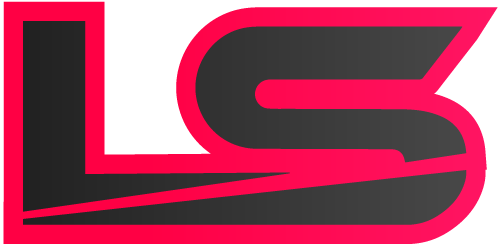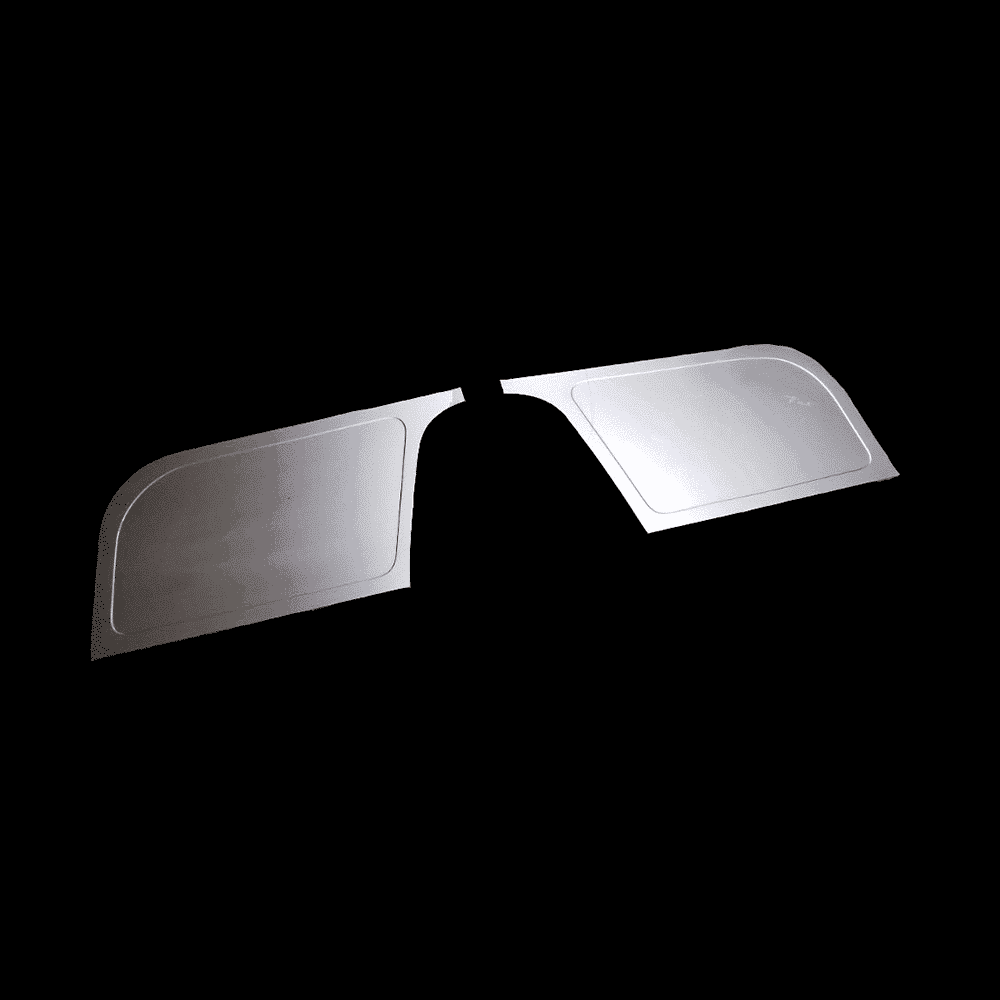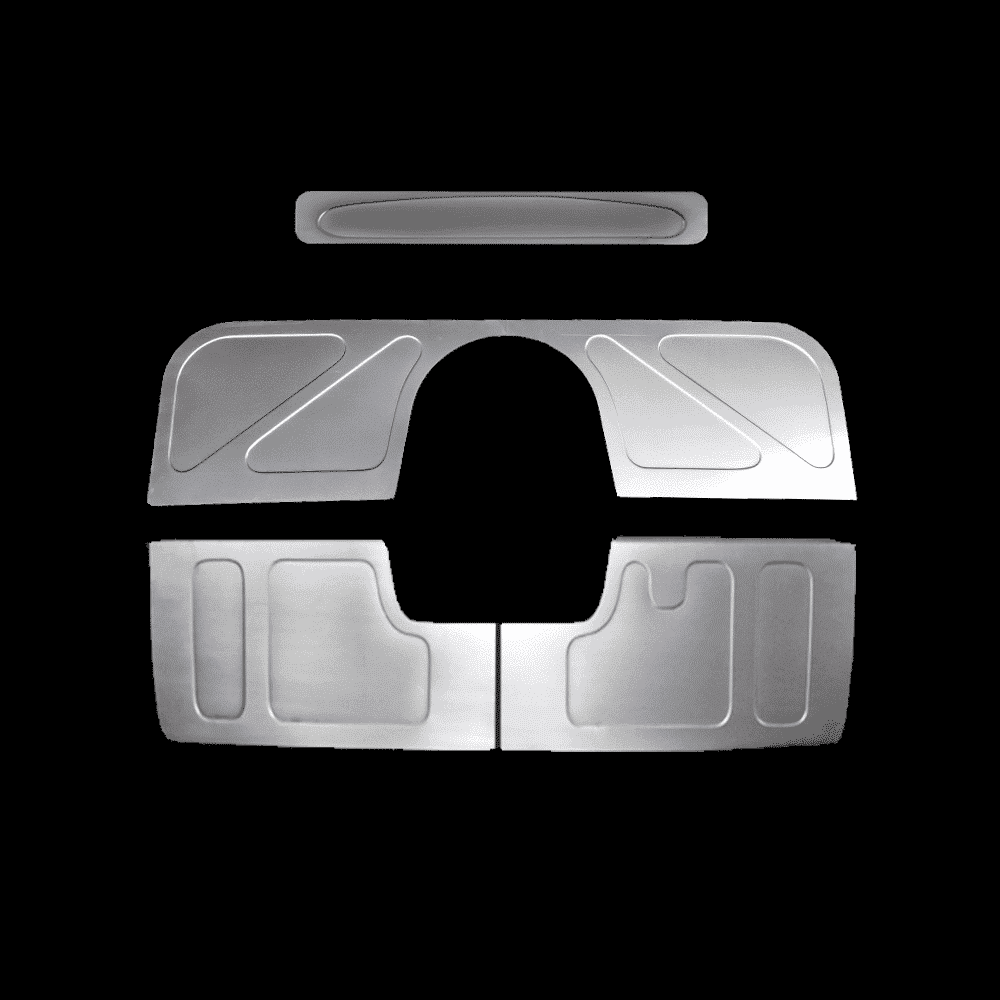When you’re restoring a vintage Chevy truck, the sheet metal firewall deserves your attention. This critical part separates the compartment where you’ll sit from the engine. The firewall reduces engine noise, keeps fumes out of the driver’s compartment, prevents heat intrusion into the cab, and offers protection in case of an engine fire. It can also be a feature piece for your custom pickup with a Bead Rolled Firewall from LS Fabrication.
Whether you’re rebuilding the whole Chevy truck from the ground up or just replacing the engine and a few other body parts, a bead rolled firewall or shaved firewall from LS Fabrication is a great choice. At LS Fabrication, we’re passionate about creating precision parts that are made to last. You can count on us for a durable advance design firewall that performs like the truck’s original but is much more stylish and custom. Read on to learn about our firewall options and how to make your installation a success.
Types of Sheet Metal Firewall We Offer
One of the best parts of restoring your Chevy truck is customizing it to your preferences. We offer four types of bead rolled firewall products, including the Kalinda, Tracy, Holly, and DeeDee. The Holly and Deedee have two bead rolls and the Tracy and Kalinda styles have one. We also offer a blank or smooth firewall if you prefer a simpler shaved look.
Why You Should Install a Custom Firewall in Your Chevy Truck
Instead of trying to fill all the little holes in your stock firewall in your classic GMC or Chevy truck, we recommend putting in a custom bead rolled one from LS Fabrication. When you’re customizing other parts, it makes sense to do the same for the firewall in your engine bay. The new one will clean up the look of your engine bay. You’ll feel proud of the custom look when your project is complete.
How Our Advance Design Firewall Can Enhance Your Chevy / GMC Truck
With an LS Fabrication custom firewall, you’ll save time vs. welding up the many factory holes in your GM truck. You won’t have to spend hours welding all the factory holes just to have a factory looking firewall. You’ll be able to move on with the replacement of the firewall and have a much cleaner and custom look worth showing off.
What Makes Our Bead Rolled Firewall Options Different?
Our sheet metal firewall products are laser-cut from 18-gauge cold-rolled steel. Every curve, angle, and cut are accurate and exact every time. Each piece is made with high precision to make installation as easy as possible for our customers.
What You Need to Install Our Advance Design Firewall
To get started with installing our bead rolled firewall, you’ll need a few basic tools from your garage. Gather your welder and an angle grinder with a flapper wheel. You’ll also need a 5/16-inch drill bit, permanent marker, masking tape, bolt and wire cutters, and a screwdriver.
Installation Options for Our Bead Rolled Firewall Products
Most of our customers choose to do a welded installation after replacing the old firewall. We also have customers who weld it onto the factory 3100 firewall, which is another option if you want to save time. Some other installation options include using screws, rivets, or magnets. You can also spot-weld them from the backside or panel-bond them onto the truck’s body. We do recommend removing the old factory firewall and replacing it, but it’s up to you how you would like to do it.
Prepare Your Chevy Truck for the 3100 Firewall
The first step of the installation is preparing your Chevy truck. Begin by removing any loose wires, brackets, braces, screws, or bolts from the cab side and the outside wall. There should be no wires or other parts that could be ignited when you weld the new sheet metal to your truck’s body.
Place the Filler Panel
Place the filler panel on the outside of the 3100 firewall. Check its fit. Use a permanent marker to trace along the edge of the filler to the edge of the existing firewall. Do this on the driver’s and passenger’s sides. Use an electric grinder with a cutoff disk to take off the factory firewall. Cut inside the edge by about one-half of an inch along the reference line you drew. For convenience, use a piece of masking tape as a guide to maintaining the one-half inch spacing.
Do Not Remove the Braces
Do not remove the braces from the back side of the firewall. simply separate them from the pieces being cut out and leave them there for support of your new bead rolled firewall. The braces are there for safety and additional strength and support.
Drill the Weld Spots
Use a 5/16-inch drill bit to drill out the spot welds located along the edges of the firewall. They attach the sheet metal to the braces. This should separate the braces and firewall. You can now remove the firewall from the truck.
Create a Lip
The half-inch of metal you left around the old firewall functions as a lip. It allows you to have some space for the fillers required for the welding. Use a grinding disk or another type of abrasive tool to remove old paint, rust, or grease. The surface needs to be nice and clean for welding.
Align the Panel
Put the filler panel onto the opening where the old firewall was located. Adjust it until it’s lined up with the top and outside edges. Use some magnets or clamps to hold it in place until you are happy with its location.
Trim Any Excess Material
You may need to do a little trimming down the middle of the firewall. This is where the two fillers meet. About 1 inch of material will be left. You don’t need to trim all of it, but removing most of it is a good idea for a clean, sleek look to the engine bay.
Tack-Weld the Panel
Once you’re satisfied with the filler placement, tack-weld them. Place the welds at 1-inch intervals. This minimizes warping. Take your time and be patients. Move around the firewalls from side to side to minimize heating and warping the panel.
Grind the Welds
Now that you’ve made it this far, there are just a few finishing steps to do. It’s important to grind the welds on the firewall. This eliminates jagged edges and shards that could get loose in your engine. Getting the extra material off the firewall creates a good-looking smooth finish and also helps identify if more tacks may be needed. Once the welds are cool, clean the panel. Now your Chevy truck is ready for any additional bodywork you want to do.
At LS Fabrication, we want your installation of a Chevy truck custom sheet metal firewall to go as smoothly as possible. Precision matters and we make every product with ease of install for the do it yourself or pro in mind. Your success is our success.
We’re available by email or phone to assist you at any point during your installation. To learn more about our options for Chevy trucks, contact us today.





0 Comments